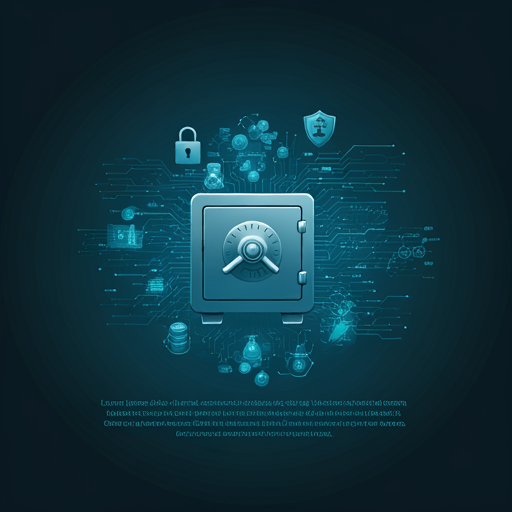Introduction to Cybersecurity in Finance
The Importance of Cybersecurity
Here are 10 trending article titles for a financial website based on the latest news and analysis: No input data
Overview of Financial Cyber Threats
Financial institutions face numerous cyber threats today. These threats can lead to significant financial losses. Phishing attacks, for instance, trick users into revealing sensitive information. This can happen to anyone. Ransomware is another serious concern, encrypting data until a ransom is paid. It’s alarming how quickly this can escalate. Additionally, insider threats pose risks from within organizations. Trust is essential, but vigilance is crucial. Understanding these threats is vital for safeguarding assets. Knowledge is power in the digitql age.
Understanding Cryptocurrency Vulnerabilities
Common Security Flaws in Cryptocurrency Platforms
Cryptocurrency platforms often exhibit critical security flaws. These vulnerabilities can lead to substantial financial losses. For example, inadequate encryption methods expose user data to breaches. This is a serious concern. Additionally, poor access controls allow unauthorized users to exploit systems. Such oversights can be catastrophic. Furthermore, reliance on third-party services increases risk exposure. He must evaluate these dependencies carefully. Regular security audits are essential for identifying weaknesses. Proactive measures tin can mitigate potential threats.
Case Studies of Major Breaches
Several notable breaches have highlighted vulnerabilities in cryptocurrency platforms. For instance, the Mt . Gox incident resulted in the loss of approximately 850,000 Bitcoins. This breach stemmed from inadequate security measures and poor management practices. It was a significant event. Another example is the Coincheck hack, where hackers stole $530 million in NEM tokens. This breach occurred due to insufficient security protocols.
Key factors contributing to these breaches include:
These issues underscore the need for robust security frameworks. Awareness is crucial for prevention.
Best Practices for Securing Your Cryptocurrency
Using Hardware Wallets for Storage
Using hardware wallets is a secure method for storing cryptocurrency. These devices provide offline storage, significantly reducing exposure to online threats. He should choose reputable brands known for their security features. This is essential for protection. Additionally, he must ensure that the wallet’s firmware is regularly updated. Regular updates enhance security against vulnerabilities.
Best practices for using hardware wallets include:
These measures help safeguard digital assets. Security is paramount in cryptocurrency management.
Implementing Two-Factor Authentication
Implementing two-factor authentication (2FA) is crucial for securing cryptocurrency accounts. This additional layer of security significantly reduces the risk of unauthorized access. He should enable 2FA on all accounts. It is a simple step. Common methods include SMS codes and authentication apps. These options provide varying levels of security.
Best practices for 2FA include:
These measures enhance overall account security. Vigilance is key in digital asset protection.
Regulatory Framework and Compliance
Global Regulations Impacting Cryptocurrency Security
Global regulations significantly impact cryptocurrency security practices. Various jurisdictions have implemented frameworks to govern digital assets. Compliance with these regulations is essential for legitimacy. He must stay informed about local laws. For instance, the Financial Action Task Force (FATF) sets guidelines for anti-money laundering (AML) measures. These guidelines are crucial for risk mitigation.
Key regulatory considerations include:
Adhering to these regulations enhances trust. Awareness is vital for all stakeholders.
Best Practices for Compliance in the Crypto Space
Compliance in the crypto space is essential for operational integrity. Adhering to regulations helps prevent legal issues. He should implement robust KYC procedures. This ensures proper identification of clients. Additionally, maintaining accurate transaction records is crucial. It aids in transparency and accountability.
Best practices include:
These measures enhance overall compliance. Awareness is key for success.
The Role of Blockchain Technology in Security
How Blockchain Enhances Security
Blockchzin technology significantly enhances security in digital transactions. Its decentralized nature reduces the risk of single points of failure. He should understand that each transaction is cryptographically secured. This ensures data integrity and authenticity. Additionally, the immutability of blockchain records prevents unauthorized alterations. Once recorded, data cannot be changed easily.
Key features include:
These attributes foster trust among users. Security is paramount in financial transactions.
Limitations of Blockchain Security
While blockchain offers enhanced security, it has limitations. For instance, the technology is not immune to human error. He must recognize that poor key management can lead to losses. Additionally, scalability issues can affect transaction speed. This can hinder user experience during peak times.
Other limitations include:
These factors can undermine trust in the system. Awareness of these risks is essential.
Future Trends in Cybersecurity for Finance
Emerging Technologies and Their Impact
Emerging technologies are reshaping the landscape of cybersecurity in finance. Artificial intelligence (AI) enhances threat detection and response capabilities. He should consider how machine learning algorithms analyze vast data sets. This improves the identification of anomalies. Additionally, blockchain technology offers secure transaction methods. It reduces fraud risks significantly.
Key trends include:
These innovations can enhance security measures. Staying informed is crucial for financial professionals.
Preparing for Future Cyber Threats
Preparing for future cyber threats is essential for financial institutions. He must adopt proactive security measures to mitigate risks. Regularly updating software and systems is crucial. This helps protect against vulnerabilities. Additionally, conducting employee training on cybersecurity best practices is vital. Awareness can prevent many breaches.
Key strategies include:
These actions enhance overall security posture. Vigilance is key in this landscape.
